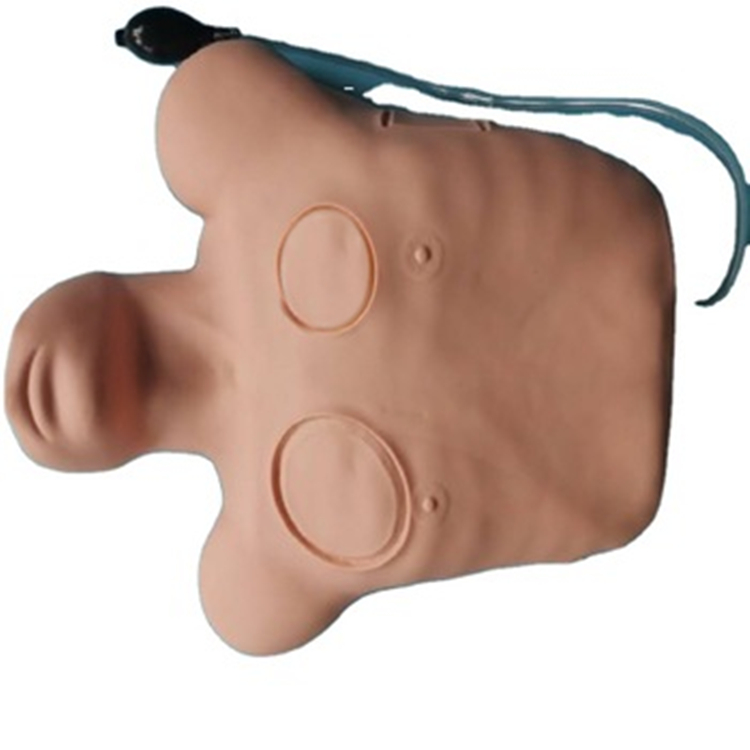Pneumothorax treatment model plays an important role in medical education and clinical practice. It can simulate real pneumothorax condition and provide a safe and effective training environment for medical staff. The following is a detailed explanation of how the pneumothorax processing model simulates real pneumothorax conditions.

First of all, in the process of design and manufacture of pneumothorax treatment model, the anatomical structure of real human body and pathological characteristics of pneumothorax will be referred to. Models are typically made using medical-grade materials that have good biocompatibility and stability and are able to simulate the elasticity and toughness of human tissue. In addition, the model simulates different chest pressure, gas distribution, and lung compression depending on the type and degree of pneumothorax.
Secondly, the pneumothorax treatment model can simulate the clinical manifestations and signs of pneumothorax patients. For example, when the model simulates a tension pneumothorax, the pressure in the chest rises rapidly, causing severe compression of the lungs, while also simulating the patient's clinical manifestations such as dyspnea, chest pain, and cough. These simulated signs and symptoms can help medical staff to better understand and grasp the pathophysiological process of pneumothorax.
In addition, the pneumothorax treatment model has a variety of functions to simulate real pneumothorax conditions. For example, the model can simulate a pneumothorax puncture, allowing medical personnel to perform the puncture in a simulated chest cavity and observe the release of gas and the reexpansion of the lung. At the same time, the model can also simulate the drainage process of pneumothorax, allowing medical personnel to practice how to properly install and adjust the thoracic drainage tube, and how to deal with possible problems in the drainage process.
Finally, individual differences and special conditions should be taken into account when simulating real pneumothorax treatment model. As a result, some advanced pneumothorax management models are equipped with a variety of adjustable parameters and setting options to suit the needs of different patients and clinical scenarios. These parameters and setting options can be adjusted according to the needs of the healthcare provider to more accurately simulate a real pneumothorax condition.
In conclusion, the pneumothorax treatment model can effectively simulate the real pneumothorax condition by simulating the anatomy, pathological characteristics and clinical manifestations of the real human body, and providing a variety of functions and setting options. This provides a safe and effective training environment for medical staff to better master the diagnosis and treatment of pneumothorax.
